Creating a Model Farm: Agricultural Crafts for Kids
This article explores engaging agricultural crafts tailored for children, promoting creativity while teaching the fundamentals of farming. Discover fun projects that can inspire young minds to appreciate agriculture and sustainability.
Model farms provide an interactive way for kids to learn about agriculture. Imagine a miniature world where children can cultivate crops, care for animals, and understand the cycle of food production—all from the comfort of their home! The benefits of creating a model farm are plentiful. Not only does it enhance understanding of farming concepts, but it also fosters creativity and teamwork among children. When kids get involved in hands-on activities, they become more engaged and retain information better. Plus, it’s a fantastic way to bond with family or friends while learning something new. Have you ever thought about how much fun it would be to see a tiny barn filled with handcrafted animals? That’s the magic of model farming!
Gathering the right materials is crucial for successful crafting. To kick off your model farm project, you’ll need a variety of supplies that can be found around the house or purchased easily. Here’s a quick rundown of essential materials:
- Cardboard: Perfect for constructing buildings like barns and silos.
- Craft paper: Use it to create fields and crops.
- Paints and markers: For adding color and details to your farm.
- Glue and tape: Essential for assembling different parts of your model.
- Eco-friendly options: Consider using recycled materials to promote sustainability.
Having these materials on hand will make the crafting process smoother and more enjoyable. Remember, creativity knows no bounds, so feel free to use any other materials you can find!
Planning the layout of your model farm is an exciting step. Think of it as creating a blueprint for your miniature agricultural paradise! Start by sketching out a rough design on paper. Consider the space you have available and how you want to allocate it. You might want to designate areas for crops, animal pens, and various structures. A well-thought-out layout can make your model farm not only functional but also visually appealing. For instance, placing the barn near the animal pens makes it easier to imagine how a real farm operates. It’s like playing God in your own little farming universe!
Crafting farm animals is a fun activity for kids. You can transform simple materials into adorable representations of cows, pigs, and chickens. For example, use cotton balls for fluffy sheep or painted rocks for colorful chickens. This section provides instructions for making various farm animals using common craft materials, fostering creativity and imagination. Not only will children enjoy making these animals, but they’ll also learn about the different roles each animal plays on a farm. It’s like bringing a little piece of the countryside into your home!
Crops are the heart of any farm. Without them, you wouldn’t have food on your table! Here, we discuss different methods for creating realistic crops and fields in your model farm. Use green paper to create rows of vegetables or craft paper to simulate wheat fields. You can even add texture with fabric scraps to make it look more authentic. The key is to make it fun and educational, teaching kids about the importance of crops in our daily lives. Imagine the joy on their faces when they see their miniature cornfield come to life!
Farm structures like barns and silos enhance the realism of your model. This section covers how to construct these buildings using cardboard and other materials, encouraging hands-on learning. Building a barn can be as simple as folding cardboard into a rectangular shape and painting it red. Add details like windows and doors to make it more realistic. Kids will love seeing their hard work come together, and it’s a great opportunity to talk about the different types of structures found on real farms. Think of it as building a tiny community where every structure has a purpose!
Teaching sustainability is vital in agriculture. This section highlights ways to incorporate eco-friendly practices into your model farm, promoting awareness of environmental issues among children. Discuss the importance of crop rotation, composting, and using natural fertilizers. You can even create a small compost bin using a container and some soil to demonstrate how organic waste can be turned into nutrient-rich compost. It’s a fantastic way to instill values of sustainability and responsibility in young minds. After all, today’s kids are tomorrow’s caretakers of the Earth!
Activities and games enhance the learning experience. Here, we suggest various games related to farming that can be played alongside the model farm project, fostering teamwork and fun. For instance, you could set up a scavenger hunt where kids look for different crops around the house or yard. Or, create a trivia game about farming facts to test their knowledge. These engaging activities not only reinforce what they’ve learned but also make the entire experience enjoyable. Who knew learning about farming could be so much fun?
Once completed, showcasing the model farm can be rewarding. This section discusses ideas for presenting your farm to family and friends, encouraging kids to share their hard work and creativity. Consider organizing a mini-exhibition where kids can explain their farm layout and the various elements they created. You could even invite family members to vote for their favorite parts of the farm. It’s a great way to celebrate their efforts and boost their confidence. After all, every little farmer deserves a moment in the spotlight!
Q: What age group is suitable for creating a model farm?
A: Kids aged 5 and up can enjoy this activity, with varying levels of complexity based on their age.
Q: How long does it take to complete a model farm?
A: Depending on the complexity, it can take anywhere from a few hours to several days.
Q: Can I use recycled materials?
A: Absolutely! Using recycled materials is encouraged and promotes sustainability.
Q: What are some eco-friendly practices I can teach my kids?
A: You can teach them about composting, crop rotation, and using natural pest control methods.

Introduction to Model Farms
Model farms are not just miniature replicas of real farms; they are interactive learning experiences that bring the world of agriculture to life for children. Imagine a vibrant landscape filled with colorful crops and playful farm animals, all crafted by little hands eager to learn. The benefits of creating a model farm extend far beyond mere entertainment; they serve as a gateway for kids to understand the fundamentals of farming and the importance of sustainability. Through hands-on activities, children can grasp essential concepts such as crop rotation, animal husbandry, and the delicate balance of ecosystems.
Creating a model farm encourages creativity while teaching valuable lessons about where our food comes from and how we can protect our planet. As kids engage in this fun project, they develop a sense of responsibility towards nature and an appreciation for the hard work that goes into farming. It's like planting a seed of knowledge that will grow as they explore the various aspects of agriculture. Plus, model farms can be a fantastic tool for teachers and parents alike, providing a visual and tactile learning experience that traditional textbooks simply cannot offer.
But what exactly makes model farms so appealing to children? Here are a few reasons:
- Hands-on Learning: Children learn best when they can touch, see, and create. Crafting a model farm allows them to engage multiple senses.
- Creativity: Kids can design their farms however they like, using their imagination to create unique landscapes and structures.
- Teamwork: Building a model farm can be a group project, fostering collaboration and communication among peers.
- Connection to Nature: By understanding farming practices, children develop a deeper connection to the environment and the food they consume.
In summary, model farms are a fantastic way to introduce children to the world of agriculture. They provide an engaging platform for kids to explore, learn, and grow, both literally and figuratively. So, gather your supplies and get ready to embark on a delightful journey into the heart of farming!
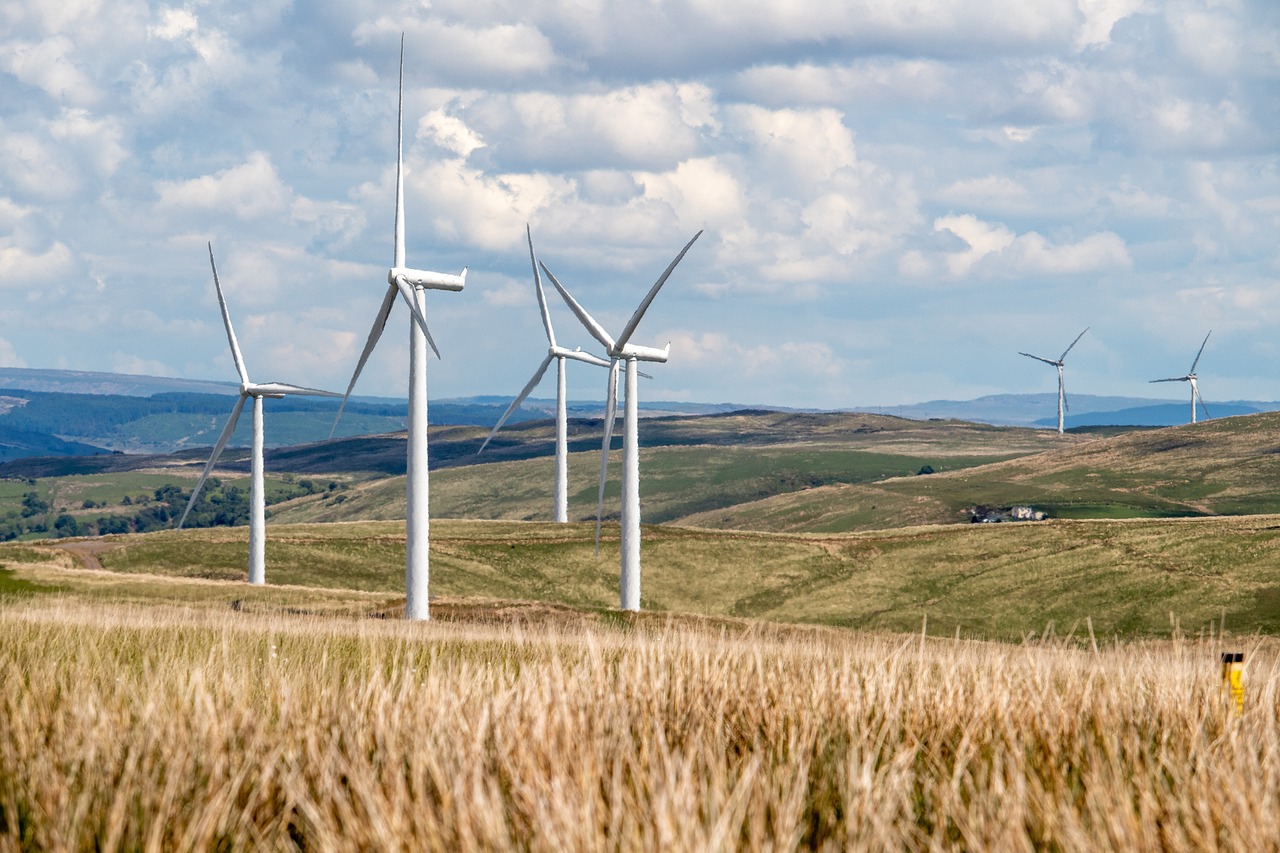
Essential Materials for Crafting
When embarking on the exciting journey of creating a model farm, having the right materials is crucial to ensure a fun and successful crafting experience. Imagine walking into a treasure trove of supplies, where each item holds the potential to spark creativity and bring your farm to life! From vibrant colors to textures that mimic real-life farm elements, the materials you choose can make all the difference. Here’s a rundown of essential supplies that will set the stage for your little agricultural adventure.
First and foremost, you’ll need a solid base for your farm layout. A large piece of cardboard or a wooden board works wonderfully for this purpose. Think of it as the canvas for your masterpiece! Next, gather craft paper in various colors; this will help you create fields, crops, and even water bodies that make your farm vibrant and realistic.
Don’t forget about eco-friendly options! Using recycled materials not only teaches kids about sustainability but also adds a unique touch to your model. Items like egg cartons can be transformed into barns, while plastic bottle caps can become wheels for tractors. The possibilities are endless! Here’s a quick list of other essential materials:
- Glue and Tape: These are your best friends when it comes to assembling various parts of your farm.
- Paints and Brushes: Add color to your creations and bring them to life!
- Scissors: A trusty pair of scissors is essential for cutting out shapes and materials.
- Markers and Crayons: Perfect for adding details and personal touches to your farm.
- Craft Foam: This can be used to create three-dimensional elements like animals and crops.
Additionally, if you want to add a touch of realism, consider using natural materials such as small twigs, leaves, and stones. These can serve as authentic landscaping elements that enhance the overall look of your model farm. You could even take a short nature walk to collect these materials, making it a fun outing before you dive into crafting!
Lastly, let’s not forget about the little details that can really make your model farm shine. Items like miniature farm tools, toy animals, and even tiny fences can be found at craft stores or online. These details will not only captivate the imagination of children but also teach them about the various aspects of farming life. So, gather your materials, roll up your sleeves, and get ready to create a farm that’s bursting with creativity and fun!
Q: What age is appropriate for kids to start crafting a model farm?
A: Kids as young as 5 can participate in simple crafting activities with adult supervision, while older children can take on more complex tasks independently.
Q: Are there any specific eco-friendly materials you recommend?
A: Absolutely! Look for recycled paper, cardboard, and natural elements like leaves and twigs. These not only reduce waste but also promote sustainability.
Q: How long does it typically take to complete a model farm?
A: The time can vary greatly depending on the complexity of the model and the age of the children involved. Generally, you can expect to spend a few hours to a couple of days on the project.
Q: Can we incorporate lessons about sustainability into our crafting?
A: Yes! Use this opportunity to discuss topics like recycling, composting, and the importance of local farming practices while you craft.
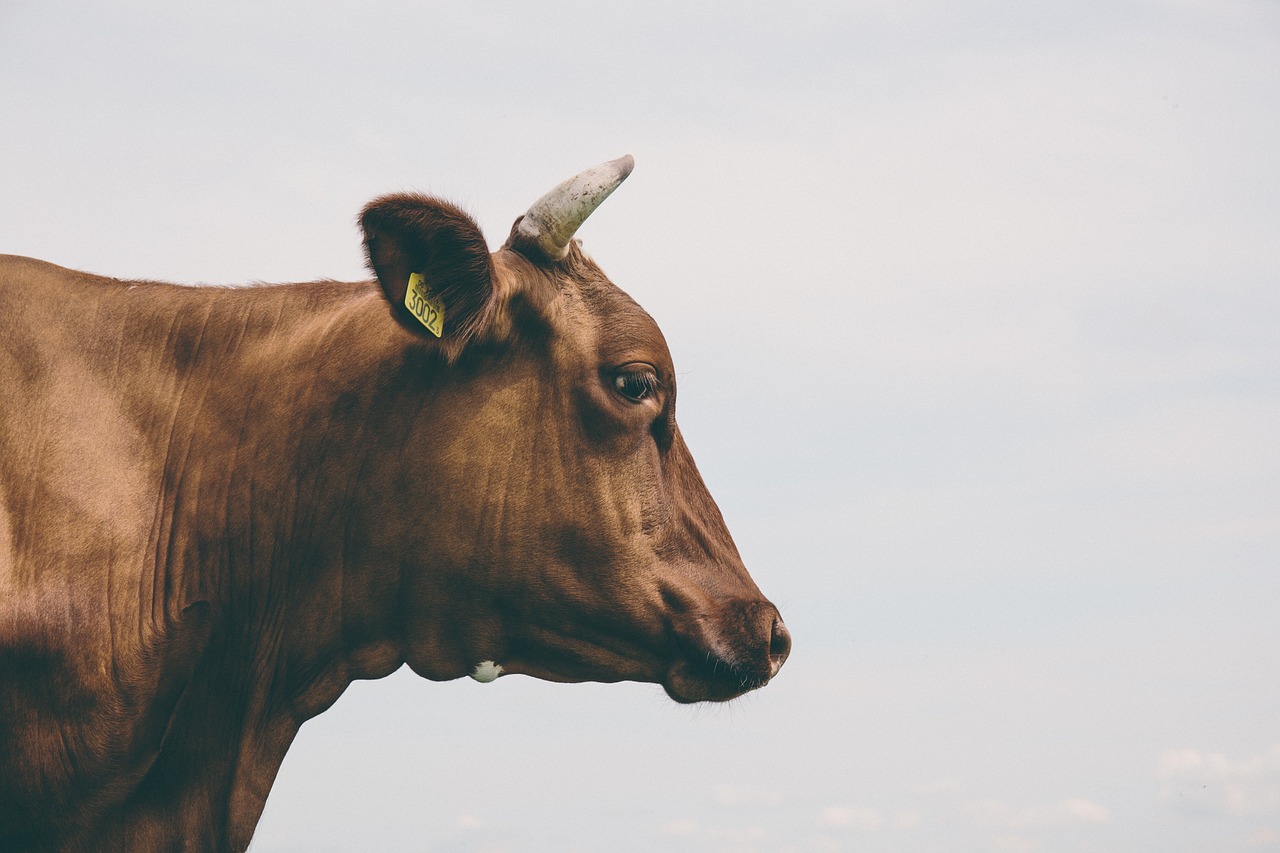
Designing Your Farm Layout
Designing the layout of your model farm is like sketching the blueprint of a dream. It’s an exciting step that allows kids to unleash their creativity while learning about the practicalities of farming. When planning your farm, consider how each section interacts with one another—much like how real farms operate. Think of your farm as a mini-ecosystem where every part plays a crucial role. From crops to animals, each component must have its own designated space, yet they should also work harmoniously together.
Start by envisioning the overall shape of your farm. Will it be a sprawling landscape or a compact plot? Draw a rough sketch on paper, marking areas for crops, animals, and essential structures like barns and silos. This initial layout will serve as a guide, making it easier to visualize how everything fits together. You might want to consider the following factors:
- Space Allocation: Allocate enough space for each type of crop and animal. For instance, if you plan to have a vegetable garden, ensure there's enough room for various plants to grow without overcrowding.
- Accessibility: Think about how you’ll move around the farm. Ensure paths are clear and accessible, allowing easy access to all areas for maintenance and care.
- Sunlight and Water: Position crops and animals in areas that receive adequate sunlight and can be easily watered. This mimics real farming practices and teaches kids about the importance of these resources.
Next, consider the types of crops you want to include. Will you plant rows of corn, patches of carrots, or perhaps a small orchard? Each crop has its own requirements and aesthetics. For example, tall corn plants can create a natural border, while colorful flowers can add visual interest. When designing your layout, think about how these crops will look together and how they can attract beneficial insects.
Now, let’s talk about farm animals. Decide where to place them in relation to the crops. For instance, chickens can roam freely near the vegetable garden, helping to keep pests at bay while fertilizing the soil with their droppings. On the other hand, larger animals like cows or pigs will need their own pens, which should be located away from the crops to prevent any accidental munching. This not only enhances the realism of your model farm but also teaches kids about animal husbandry and the importance of proper animal care.
Finally, don’t forget about the farm structures! Barns, silos, and fences are not just functional; they also add character to your farm. Think about how these structures fit into your layout. A large barn can serve as a central hub, while smaller sheds can be placed strategically for easy access to tools and supplies. Use materials like cardboard, paper, or even recycled items to create these buildings, making the project even more eco-friendly.
As you design your farm layout, remember that this is a creative process. Encourage kids to think outside the box and add their personal touches. Maybe they want to create a small pond for ducks or a picnic area for farm visitors. The possibilities are endless! By engaging in this design phase, children not only learn about the mechanics of farming but also develop skills in planning, problem-solving, and creativity.
Q: How do I start designing my model farm layout?
A: Begin by sketching a rough outline of your farm on paper. Decide where to place crops, animals, and structures, considering factors like accessibility and resource needs.
Q: What materials should I use for building my farm structures?
A: Cardboard, paper, and recycled materials are excellent choices for creating barns, silos, and fences. They are easy to work with and eco-friendly!
Q: Can I include non-traditional crops or animals in my model farm?
A: Absolutely! Encourage creativity by allowing kids to add unique elements to their farms, such as exotic plants or unusual animals.
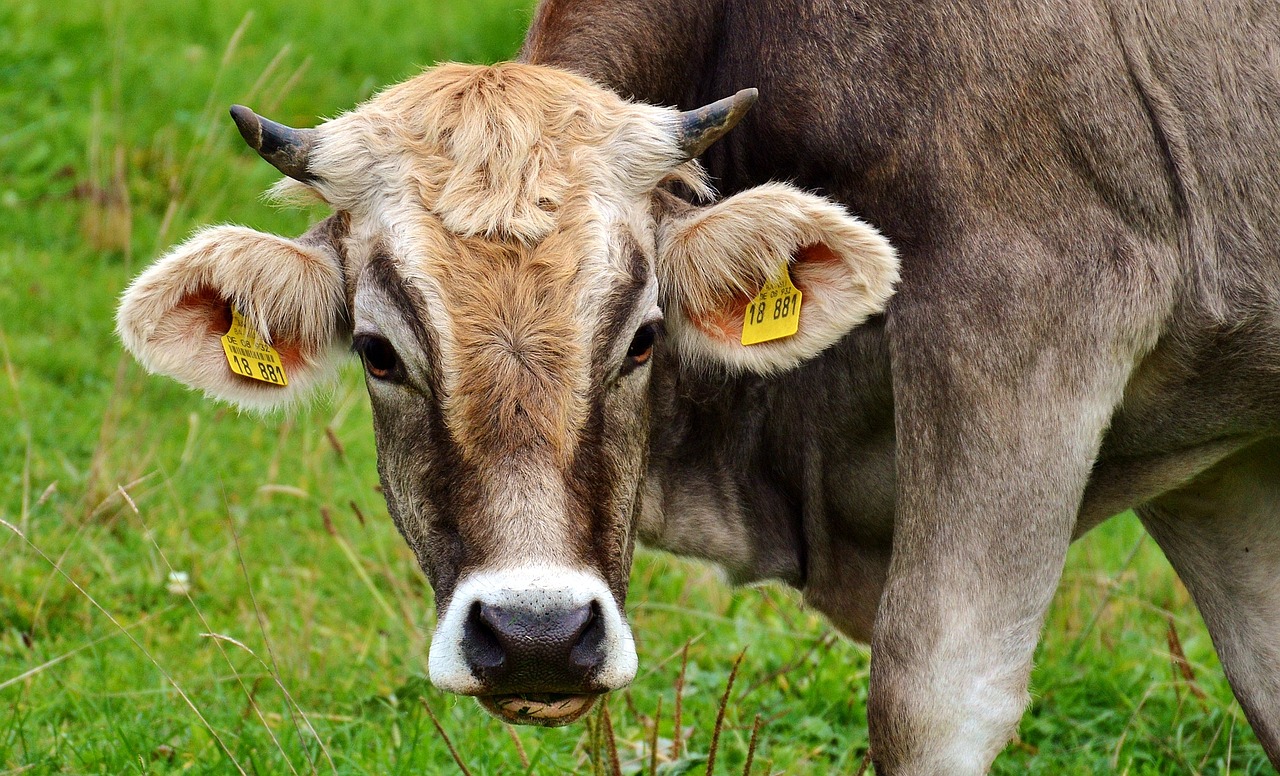
Creating Farm Animals
Crafting farm animals is not just a fun activity for kids; it's an opportunity for them to unleash their creativity and learn about the various animals that inhabit a farm. Imagine the joy on a child's face when they bring their own farm animals to life using simple materials! This section will guide you through the process of making these adorable creatures, ensuring that the experience is as educational as it is enjoyable.
To start, you’ll want to gather some basic materials. Here’s a quick list of items that can be used to create a variety of farm animals:
- Cardboard
- Felt or fabric scraps
- Googly eyes
- Glue and scissors
- Markers or paint
- Pipe cleaners
Once you have your materials ready, the real fun begins! Let’s consider how to create a few popular farm animals:
1. Creating a Cow: Start with a sturdy piece of cardboard for the body. Cut out a cow shape and then glue on felt pieces for the spots. Use googly eyes to give it a lively expression, and don’t forget to add a tail made of pipe cleaners! This not only teaches children about cows but also allows them to express their artistic flair.
2. Crafting a Pig: For a pig, use pink felt or paper to create a round body. Add small ears and a curly tail using pipe cleaners. Drawing on a cute face with markers can help bring your pig to life. Children can learn about the importance of pigs in agriculture while having a blast crafting their own versions!
3. Making a Chicken: A simple chicken can be made using a paper cup. Paint it yellow, add a beak and eyes, and use feathers for a fun touch. This project introduces kids to the concept of poultry farming and the role chickens play in our food system.
As kids create these farm animals, encourage them to think about how each animal contributes to the farm ecosystem. They can even make a little farm story to go along with their creations, explaining what each animal does and why they are important. This storytelling aspect can enhance their learning experience and spark their imagination even further.
In addition to crafting, consider incorporating games that involve these animals. For instance, you can set up a mini farmyard where kids can role-play as farmers, taking care of their crafted animals. This not only reinforces what they’ve learned about farm life but also enhances their social skills as they engage with their peers.
Creating farm animals is a fantastic way for children to develop fine motor skills, boost their creativity, and learn about agriculture. So gather those materials, roll up your sleeves, and let the crafting begin! Who knows, you might just inspire the next generation of farmers!
Q: What age group is suitable for farm animal crafts?
A: Farm animal crafts are ideal for children aged 5 and up, but younger kids can also participate with adult supervision.
Q: Can we use recycled materials for crafting?
A: Absolutely! Using recycled materials not only saves money but also teaches kids about sustainability.
Q: How long does it take to create these farm animals?
A: Depending on the complexity, each animal can take anywhere from 30 minutes to a couple of hours to create.
Q: What if my child wants to make animals not typically found on a farm?
A: Encourage their creativity! They can easily adapt the crafting techniques to create any animal they like, fostering imagination and innovation.
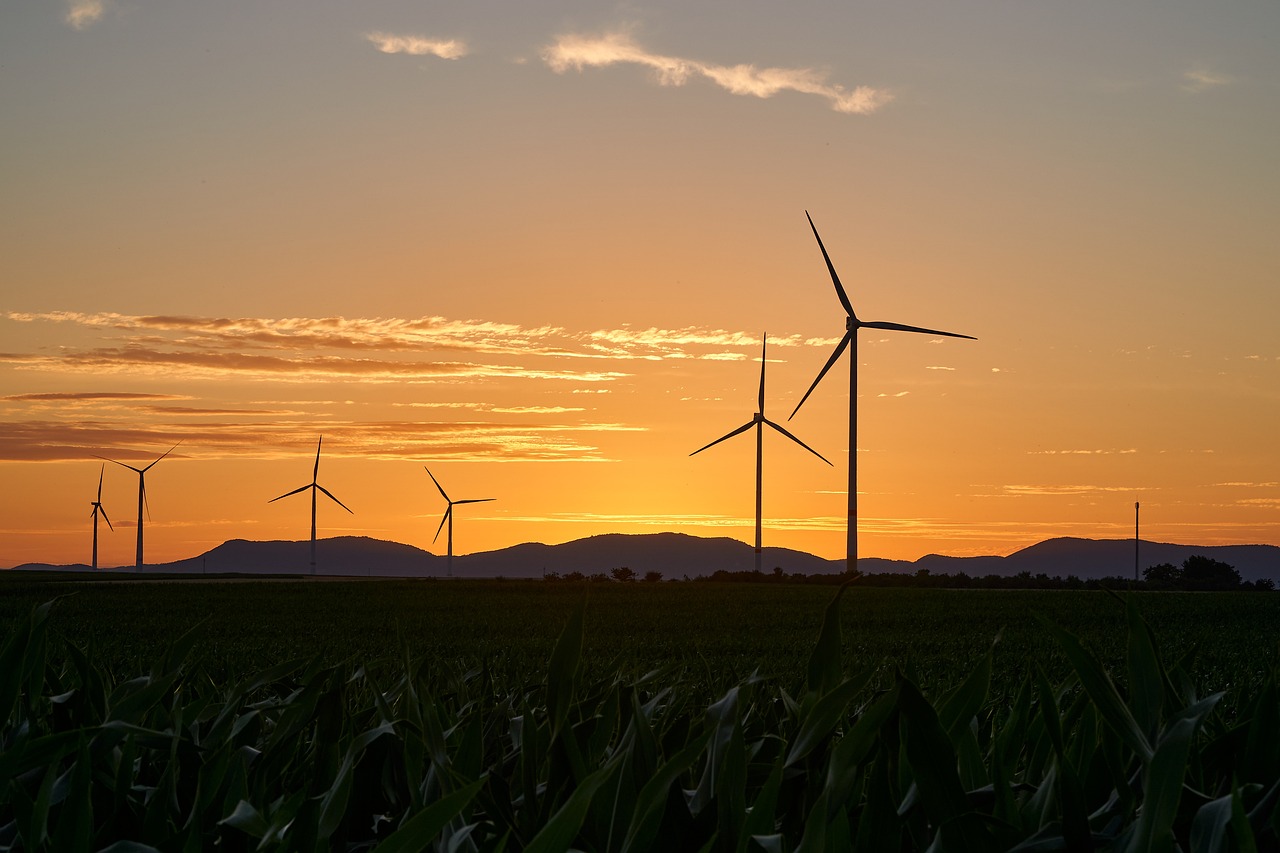
Building Crops and Fields
Creating crops and fields in your model farm is like planting the seeds of imagination in your child's mind. It’s not just about making things look pretty; it’s about understanding how food grows and the importance of agriculture. By crafting realistic crops, you can teach kids about the various types of plants that thrive in different environments, and how farmers work hard to grow them. So, let’s dig into some fun and easy ways to build those vibrant fields!
First off, consider using recycled materials to create your crops. Cardboard tubes, colored paper, and even fabric scraps can transform into beautiful representations of vegetables, fruits, and grains. For instance, you can cut green paper into leaf shapes and attach them to a cardboard base to create a mini cornfield. It’s a fantastic way to engage kids in eco-friendly practices while they learn about farming!
To make your crops more realistic, you might want to incorporate textures. For example, you can use green felt to mimic the lushness of grass or create a field of wheat using strands of yellow yarn. This hands-on approach not only enhances the visual appeal but also gives children a tactile experience, allowing them to feel the different textures that represent various crops.
When it comes to planting your crops, think about the layout of your fields. You could create a small garden plot where each section represents a different type of crop. For instance, one area could be dedicated to tomatoes, while another could showcase carrots. This not only adds variety but also teaches kids about crop rotation and the importance of biodiversity in farming.
Here’s a simple way to organize your crops:
| Crop Type | Materials Needed | Instructions |
|---|---|---|
| Tomatoes | Red paper, green paper, glue | Cut red circles for tomatoes and green leaves. Glue them onto a stick or cardboard base. |
| Carrots | Orange paper, green yarn | Shape orange paper into a cone and attach green yarn for the tops. |
| Wheat | Yellow yarn | Cut yarn into small pieces and glue them together to form a bunch. |
As you build your model farm, don’t forget to include pathways between your fields. You can create these paths using small pebbles or colored sand, giving a realistic touch to the layout. This not only enhances the visual appeal but also teaches kids about how farmers navigate their fields.
Lastly, encourage your children to think about the seasons and how they affect crop growth. You could even set up a small calendar to track when each crop would typically be planted and harvested. This will help them understand the cycles of farming and the hard work that goes into producing food. Remember, building crops and fields isn’t just a craft; it’s a powerful way to instill a love for agriculture and sustainability in young minds.
- What materials are best for creating crops? Recycled materials like cardboard, paper, and fabric are excellent choices.
- How can I teach my child about crop rotation? Use different sections of your model farm to represent various crops and explain their growth cycles.
- Can we incorporate real plants? Absolutely! If you have space, consider planting small seeds in pots as part of your project.

Adding Farm Structures
When it comes to creating a model farm, the magic often lies in the details, and one of the most exciting aspects is building the farm structures. These structures not only add realism to your model but also serve as a fantastic opportunity for kids to learn about the different components that make up a working farm. Think of it like the icing on a cake; without it, the cake is just a plain sponge, but with it, you have a delightful masterpiece!
First up on the list of essential farm structures is the barn. This iconic building is where farmers store equipment, feed, and sometimes even livestock. You can create a barn using simple materials like cardboard, which is both affordable and readily available. To make it even more engaging, let your kids decorate the barn with their favorite colors or add fun details like a weather vane or a painted sign. The process of constructing a barn can be a great lesson in teamwork as kids collaborate on design and assembly.
Another vital structure is the silo. Silos are used for storing grain and are typically tall and cylindrical. You can easily make a silo using a paper towel tube. Just cut it to the desired height, decorate it with paint or colored paper, and voilà! You have a silo that adds height and interest to your model farm. It’s fascinating to explain to kids how silos help in preserving food and reducing waste, especially in today's world where sustainability is key.
Don't forget about fences! Fences are essential for keeping livestock safe and defining property boundaries. You can create fences using popsicle sticks or even straws. Kids can get creative by painting them in different colors or adding small decorative elements like flowers or signs. This is a perfect chance to discuss the importance of animal safety and how farmers protect their animals from predators.
For a more advanced project, consider building a greenhouse. A greenhouse allows for year-round farming and can be made using clear plastic sheets and a frame of straws or sticks. This project can lead to discussions about plant growth and the science of agriculture, making it not just a crafting activity but also an educational experience.
To wrap things up, adding farm structures is not just about making your model look good; it’s about creating a learning environment where kids can explore the fundamentals of farming. By engaging in these hands-on activities, children can better understand the role of each structure and how they contribute to the overall functioning of a farm. So gather your materials and let your imagination run wild—your model farm is about to become a bustling agricultural hub!
Q: What materials do I need to build farm structures?
A: You can use a variety of materials including cardboard, popsicle sticks, paper towel tubes, and paints. Eco-friendly options are also encouraged!
Q: How can I make my farm structures more realistic?
A: Adding details like paint, decorations, and even miniature animals can enhance the realism. Researching actual farm structures can also provide inspiration!
Q: Is this project suitable for all ages?
A: Yes! While younger children may need guidance, older kids can take the lead in designing and building their structures.

Incorporating Sustainable Practices
In today's world, where environmental concerns are at the forefront of our minds, integrating sustainable practices into your model farm project is more important than ever. Not only does it teach kids the value of caring for the environment, but it also instills a sense of responsibility towards our planet. Imagine your little ones learning to farm while also understanding how to protect the earth! It’s like planting two seeds at once—one for knowledge and one for sustainability.
One effective way to incorporate sustainability is by using recycled materials for your model farm. Instead of rushing to the store for new supplies, look around your home for items that can be repurposed. For example, old cardboard boxes can become fences, and plastic bottle caps can serve as colorful flower pots. This not only reduces waste but also encourages creativity. Kids will love the challenge of transforming everyday trash into treasures!
Another essential aspect of sustainability is teaching children about composting. You can create a mini compost bin using a small container filled with soil, kitchen scraps, and garden waste. Explain to the kids how compost enriches the soil, promoting healthy crops and reducing the need for chemical fertilizers. They can even use this compost in their model farm, demonstrating a practical application of their learning.
Water conservation is another critical element. Discuss with your children the importance of saving water in farming. You can simulate a rainwater collection system using a small bucket or container to catch water from a faucet. This hands-on experience will help them grasp the concept of efficient water usage and its significance in real farming practices.
As you build your model farm, consider planting a variety of crops that are native to your region. This not only supports local biodiversity but also teaches kids about the importance of growing plants that thrive in their environment. You can create a small garden section in your model farm with these native plants, allowing children to visualize how diverse farming practices can be.
Finally, don't forget to discuss the concept of organic farming. You can explain the differences between organic and conventional farming methods, emphasizing the benefits of using natural fertilizers and pest control methods. Kids can even create signs for their model farm indicating which crops are grown organically, fostering a deeper understanding of sustainable agriculture.
Incorporating these sustainable practices into your model farm not only enhances the learning experience but also inspires a new generation of environmentally-conscious individuals. By nurturing their creativity alongside their responsibility for the planet, you're helping them cultivate a future where agriculture and sustainability go hand in hand.
- What materials can we use for our model farm? You can use recycled items like cardboard, plastic bottles, and old toys. This encourages creativity and sustainability!
- How can we teach kids about composting? Create a mini compost bin with kitchen scraps and soil, explaining how it enriches the earth.
- What are some native crops we can include? Research local plants that thrive in your area and incorporate them into your model farm for a realistic touch.
- How can we demonstrate water conservation? Set up a rainwater collection system with a small container to teach kids about efficient water use.
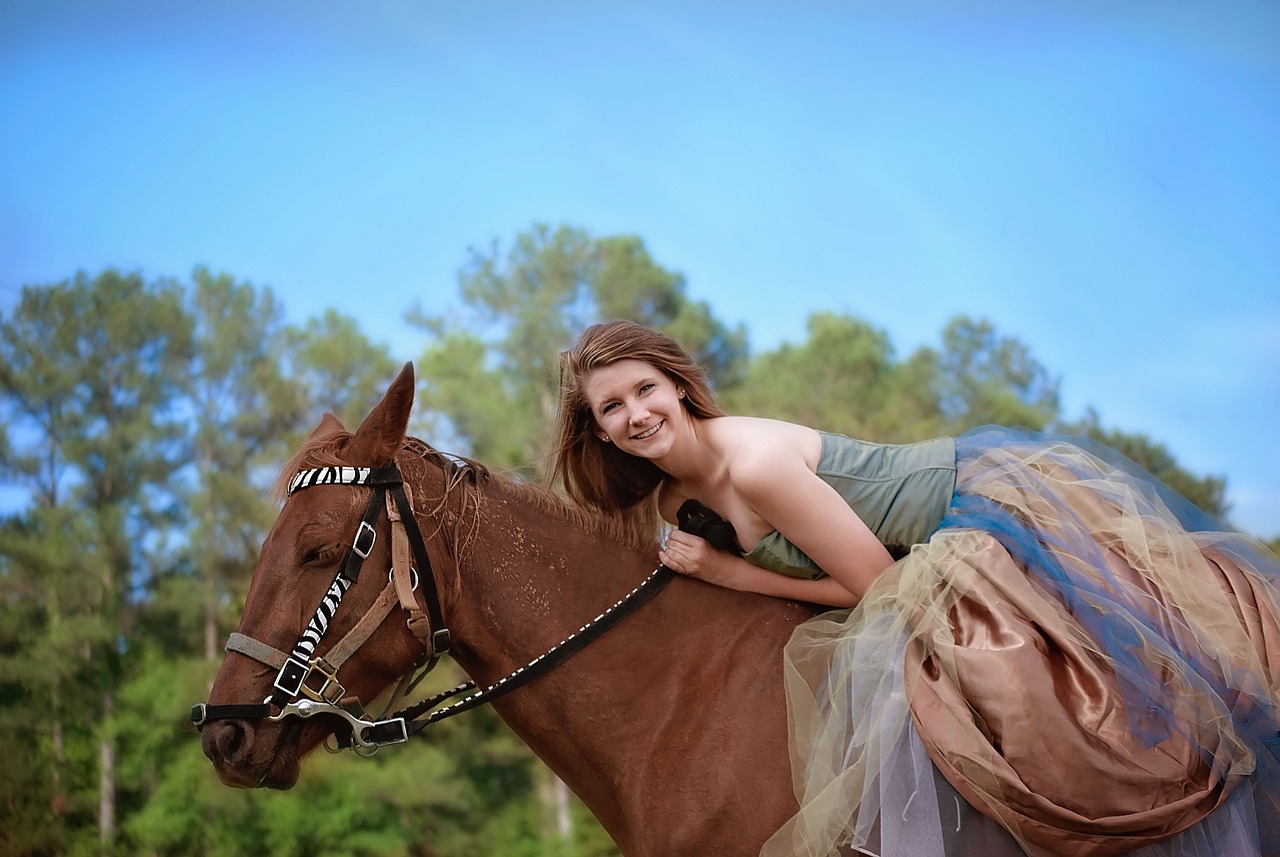
Engaging Activities and Games
Creating a model farm is not just about crafting; it's also about making learning fun! Engaging activities and games can transform your model farm project into an interactive experience that fosters teamwork and creativity among kids. Imagine the excitement as they dive into a world where they can play farmer for a day, all while learning about agriculture and sustainability. So, how can you make this experience even more engaging? Let’s explore some fantastic ideas!
One great way to keep the momentum going is to organize a farm-themed scavenger hunt around your model farm. This activity can be a thrilling adventure where kids search for different farm elements, such as crops, animals, and tools. You can create a list of items for them to find, which not only encourages them to explore the intricacies of their model but also teaches them to identify various components of a farm. Here’s a quick example of what that list might look like:
| Item | Description |
|---|---|
| Cow | A black and white cardboard cutout representing a cow. |
| Carrot | A small orange piece of paper or foam shaped like a carrot. |
| Barn | A mini barn structure made from recycled materials. |
| Chicken | A cotton ball or pom-pom decorated to look like a chicken. |
Another fun activity could be a role-playing game where kids take on different roles in the farming process. They can be farmers, animals, or even crops! This imaginative play helps them understand the various responsibilities on a farm and encourages them to think critically about food production and sustainability. You could set up scenarios where they have to solve problems, like how to deal with a drought or how to manage livestock. It’s a playful way to teach serious lessons!
To further enhance the learning experience, consider introducing a farmers' market simulation. Kids can create products using their model farm and then "sell" them to family members or friends. This not only teaches them about the economics of farming but also gives them a sense of pride in their work. They can make signs for their products, set up a booth, and even practice their sales pitches. It’s a fantastic way to blend creativity with real-world skills!
Don't forget about the power of storytelling. Encourage kids to come up with a story about their farm or a day in the life of a farmer. They can narrate their stories to friends and family, bringing their model to life through imagination. This activity not only boosts their creativity but also enhances their communication skills. Plus, it’s a great way to bond with others as they share their unique tales!
Incorporating these engaging activities and games into your model farm project can make the entire experience more enjoyable and educational. As kids play and explore, they’ll develop a deeper appreciation for agriculture and the hard work that goes into it. So, gather your crafting supplies, roll up your sleeves, and let the fun begin!
Q: What age group is suitable for model farm activities?
A: Model farm activities are suitable for children aged 5 and up, but younger kids can participate with adult supervision. The complexity of tasks can be adjusted based on age.
Q: What materials are best for creating a model farm?
A: Eco-friendly materials like cardboard, paper, and recycled items are great for creating a model farm. You can also use natural materials like twigs and leaves for added realism.
Q: How long does it take to complete a model farm project?
A: The time it takes can vary depending on the complexity of the project and the age of the children involved. Generally, it can take anywhere from a few hours to several days.
Q: Can these activities be done indoors?
A: Yes! Most of these activities can be done indoors, making them perfect for rainy days. Just ensure you have enough space to work comfortably.

Showcasing Your Model Farm
Once you’ve poured your heart and soul into creating your model farm, it’s time to show it off! Think of this as the grand unveiling of your masterpiece. Just like an artist showcasing their painting, presenting your model farm can be an exciting and fulfilling experience. Not only does it allow kids to take pride in their hard work, but it also gives them a chance to share what they've learned about agriculture and sustainability with family and friends.
To make showcasing your model farm even more engaging, consider organizing a mini-exhibition at home or in your community. You can set up a small display area where everyone can admire the creativity that went into each part of the farm. Use props like signs or small placards to label different sections, such as “Vegetable Garden,” “Animal Pen,” or “Barn.” This adds an educational touch and helps explain the significance of each area to your audience.
Another fun idea is to create a guided tour. Kids can take turns being the “tour guide,” explaining the various components of their model farm. This not only boosts their confidence but also enhances their communication skills. Encourage them to share interesting facts about farming, sustainability, and the importance of agriculture in our daily lives. They could even include some fun anecdotes about how they crafted each element!
For a more interactive experience, consider incorporating games or activities during the showcase. You could set up a scavenger hunt where visitors have to find specific items or features within the model farm. This not only keeps everyone engaged but also reinforces the learning aspect of the project in a playful way. You could create a simple scorecard for participants to keep track of what they find.
Lastly, don’t forget to capture the moment! Take plenty of photos and videos during the showcase. This way, kids can look back on their hard work and the joy of sharing it with others. You could even create a scrapbook or digital album that combines their photos with notes about what they learned throughout the project. This not only preserves memories but also emphasizes the educational journey they experienced while creating their model farm.
Q: How can I make my model farm more interactive?
A: Consider adding elements like a scavenger hunt or having kids take turns as tour guides to explain their creations.
Q: What materials are best for showcasing the model farm?
A: Use eco-friendly materials like cardboard, recycled paper, and natural elements to keep the theme consistent with sustainability.
Q: Can we include games during the showcase?
A: Absolutely! Incorporating games can make the event more fun and engaging for everyone involved.
Frequently Asked Questions
- What is a model farm and why should my child create one?
A model farm is a miniature representation of a real farm, which allows kids to learn about agriculture in a fun and hands-on way. Creating one helps children understand farming concepts, promotes creativity, and fosters an appreciation for sustainability.
- What materials do I need to create a model farm?
To create a model farm, you will need basic craft supplies such as cardboard, glue, scissors, paint, and markers. Eco-friendly options like recycled materials can also be used, making the project not only fun but also sustainable.
- How can I design an effective layout for the model farm?
Designing an effective layout involves planning space for crops, animals, and structures. Start by sketching a rough layout on paper, considering the size of each element and how they interact with one another to create a realistic farm environment.
- What types of farm animals can we create?
You can create various farm animals using common craft materials. Think about making cows, pigs, chickens, and sheep using items like pom-poms, paper, and felt. This activity can spark creativity and imagination in your child.
- How do I make realistic crops for the model farm?
To create realistic crops, you can use materials like green paper for plants or even real seeds for an authentic touch. Consider using cotton balls for fluffy crops like wheat or painting small stones to represent vegetables. The possibilities are endless!
- What kind of farm structures can we build?
Farm structures like barns, silos, and fences can be built using cardboard, popsicle sticks, or even LEGO bricks. These structures add realism to the model farm and provide a great opportunity for kids to learn about different farming buildings.
- How can we incorporate sustainable practices into our model farm?
Incorporating sustainable practices can be as simple as using recycled materials for crafting or discussing how real farms use crop rotation and composting. This helps children understand the importance of caring for the environment while having fun.
- What activities and games can we play related to the model farm?
There are plenty of fun games to play! Consider organizing a scavenger hunt for farm-related items or creating a farming trivia game. These activities encourage teamwork and enhance the learning experience while keeping it entertaining.
- How can we showcase the completed model farm?
Once the model farm is complete, consider hosting a mini-exhibition for family and friends. Kids can explain their projects, share what they learned, and even set up a small tour of their farm. This boosts their confidence and allows them to take pride in their work!



















